Now that cannabis has become more accepted in North America, many cannasseurs are eager to try their hand at indoor cultivation. However, since cannabis cultivation skills have been underground for so long, many enthusiasts don’t know a lot about growing their favorite herb. Many first-time growers don’t know much about the parts of the cannabis plant beyond leaves and flowers and its important that cultivators use clear, standardized language and understand the correct botanical terms
Before anyone starts germinating their first batch of seeds, they should review the basics of this beautiful plant’s biology. A thorough understanding of the different parts of the marijuana plant will help you grow a successful batch on your first go.
Anatomy and morphology of a cannabis plant – what first-time cultivators need to know

| Plant Part | Definition |
| Cola | Floral clusters of many overlapping mature female plant ovaries. Typically referring to the largest and most dominant clusters found at the highest point of stems, closest to the light. Cannabis plants can produce one dominant cola, or many colas depending on the environment and training techniques applied. |
| Stalk | Stalks (also referred to as stems) are the aerial or above-ground plant parts. The vertical main stalk, also known as the meristem, is a critical part of the plant. Its purpose is to work in conjunction with the roots to transport nutrients, minerals, and water while also maintaining structure and stability. Side stalks or lateral stems are stalks that branch from the main stem. |
| Fan leaf | Botanical term used to describe “true” cannabis leaves that primarily perform photosynthesis. |
| Sugar leaf | Smaller, trichome-covered leaves that grow only during the flowering life cycle along with buds. |
| Stigma | Microscopic sticky protrusion that grows along pistils. Their function is to catch pollen. A pollinated female cannabis will produce seeds. |
| Bract | Protective leaves that encapsulate the reproductive section (ovary/ovule) of mature female cannabis plants. |
| Trichome | Greek for “hair”, these tiny growths are found on many flowering plants across the world. The function of trichomes is to protect the plant by physical and chemical means, helping the plants adjust to pests and environmental stressors. Cannabis is equipped with specialized trichomes that are responsible for the production of cannabinoids like THC and CBD, as well as aromatic organic oils called terpenes, and many other compounds important to plants |
| Pistil | Comprised of the style and stigma, pistils sole purpose is to catch pollen |
| Node | Point on along the main stalk (meristem) where leaves grow. Also where terminal branches, pollen sacs (males) and flowers (female) develop. |
| Internode | Space in between nodes along a stem |
| Inflorescence | The complete flower head of the plant including but not limited to: stems, stalks, bracts, and flowers. |
Mommas vs. misters – determining a marijuana plant’s sex
One crucial feature new cannabis growers must understand is cannabis is a dioecious species with both male and female individuals. Depending on the genetics of your seeds, environment, and growing techniques, you could wind up with a male, female, or hermaphrodite plant. Unless you want to breed your own seeds at home, you must focus on cultivating female plants in the absence of males, otherwise known as sinsemilla. 1
Unpollinated female plants produce excessively large flowers that marijuana consumers treasure. Once a female plant is pollinated, it will focus its energy on producing seeds, rather than growing potent buds. Since nobody wants to smoke seedy, low-quality bud, you’re going to want to make sure to keep any pollen away from your females.
Typically, the first signs of a cannabis plant’s sex appear after six weeks of growth. You’ll want to keep your eyes focused between the cannabis plant’s main stem and branches (the nodes) for the first indications of gender. 2
At these tight junctures, you should notice the beginnings of pollen sacs or hair-like structures called pistils. Unsurprisingly, the pollen sacks are associated with males, while the pistils appear on females.
In some instances, you might notice a combination of both pollen sacs and pistils. This feature indicates you have a hermaphrodite plant on your hands.
If your goal is to produce the most potent buds imaginable, you must remove all male and hermaphrodite plants ASAP. Once the pollen is released into the air, it will latch onto the pistils of female plants nearby and they will produce seeds rather than big buds.
How do you spot a high-quality cannabis seed?
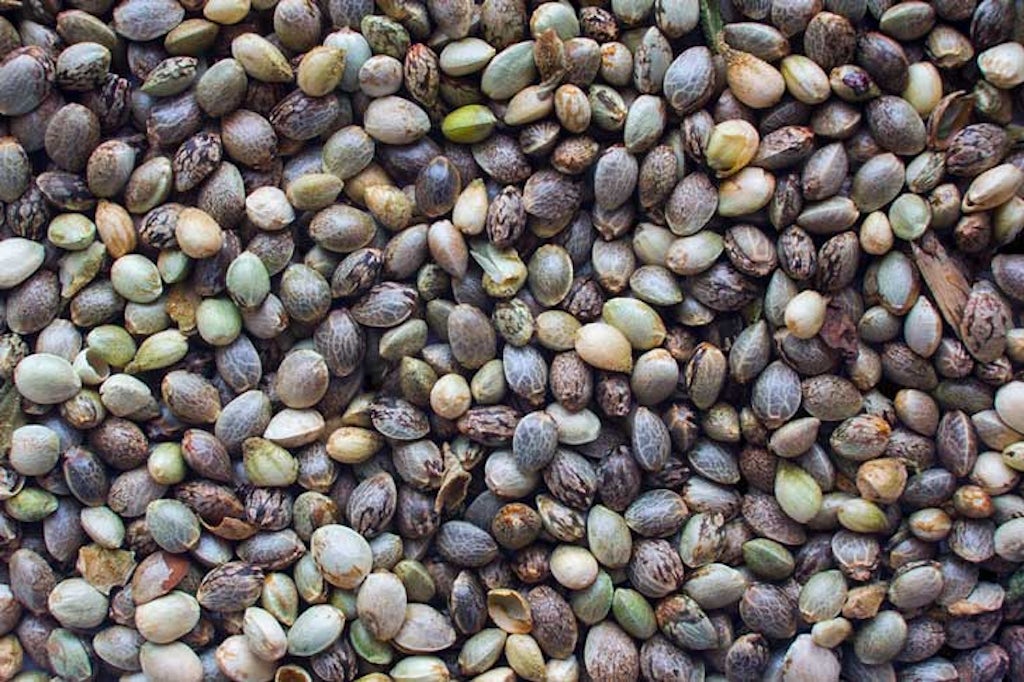
Speaking of seeds, let’s continue our cannabis morphology exploration by looking into these single-celled organisms. Like any other flower, every cannabis plant’s seed contains the “genetic blueprint” for its future maturation. In nature, there’s usually a 50/50 chance marijuana plants will express male or female seeds. Not so long ago, the only way to grow female plants was to plant all of your seeds and weed out the males before they could pollinate your females. Since the 1980s, however, professional growers have been using feminized seeds that take the guesswork out of determining the sex of your strains.
Since these seeds contain the DNA that will become your plant, you should ensure you’re starting with healthy genetics. Here are a few things to look for in healthy seeds:
- Hearty seeds will have a dark brown color, while immature seeds will look green.
- When pressed, healthy cannabis seeds should feel firm, but not brittle. Seeds that easily break or feel squishy aren’t suited for germination.
- Under the light, healthy seeds should have a nice sheen.
The root system
As you germinate your seeds under damp paper towels, you should begin to notice the cannabis plant’s first organ emerge: roots. At this early stage, you’ll only see the central taproot (radicle) breaking through. Once transplanted into soil, this taproot will grow vertically into the ground and provide your plant’s stem with stability.
But roots aren’t just tasked with keeping your plant steady. Your plant’s roots play a crucial role in absorbing nutrients and water from the soil. Recent research also suggests cannabis root networks interact with various beneficial bacteria in the ground. 3
As the cannabis plant matures, more delicate lateral roots will branch off from the central taproot. From these lateral roots, even tinier root hairs will emerge, all of which help absorb and transport essential nutrients to your cannabis plant.
Since these roots branch out so widely, growers must transplant their marijuana plant as it matures. Cannabis plants that don’t have enough space are at risk of becoming root-bound. Warning signs your plant is root-bound include fast-drying soil, yellowing leaves, and unsteady plants.
Cotyledons: The first inklings of life
Unfortunately, growers can’t observe their cannabis plants’ roots branching out because those roots are underground and out of sight. However, cultivators will know everything is going smoothly once the two cotyledons (seed leaves) emerge. 4
These tiny green leaves break through the soil as your seedling develops and will eventually fall off as larger structures begin developing.
The cannabis stem and how to train it
The stem is to the cannabis plant what the spine is to humans. This thick, vertical organ supports new branches and provides stability as your cannabis plant grows upwards. Also, this central stem draws in critical nutrients and water from the soil and delivers them to the upper parts of the plant.
If left to grow on its own, the stem of a cannabis plant will grow straight up in the shape of a Christmas tree. While there’s nothing “wrong” with growing your plant this way, it doesn’t take full advantage of your plant’s potential. Also, if you’re growing in cramped quarters, you might not be able to grow tall plants without a bit of manipulation.
Thankfully, there are many well-known training techniques to increase yield and strengthen your central stem. Arguably, the most prominent method involves bending your central stem with twine to increase light coverage. Often called low-stress training, or LST, this bending technique could dramatically increase your yield with minimal effort.
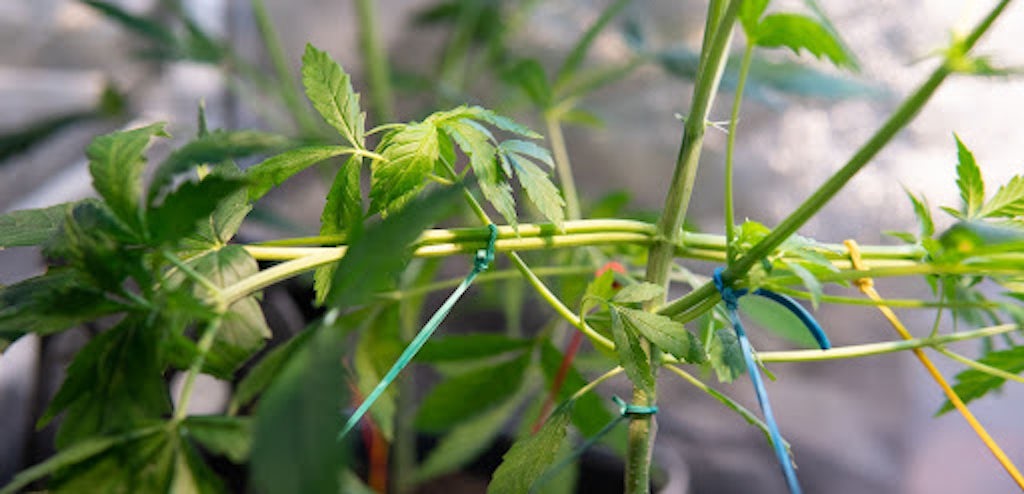
Branches, nodes, and internodes: The cannabis plant’s ‘connection stations’
As briefly mentioned above, many branches will shoot off of the central stem as your plant matures. The junctures where these branches connect to the stem are called nodes. Botanists use the term internodes to describe the space between each node.
Growers often look at these nodes during the vegetative stage to double-check their plant is female. A female cannabis flower should have only white hairy protrusions known as pistils. If you are seeing small pollen sacks, your plant is likely male or a hermaphrodite and should be discarded immediately.
Fan leaves vs. sugar leaves: What are they good for?
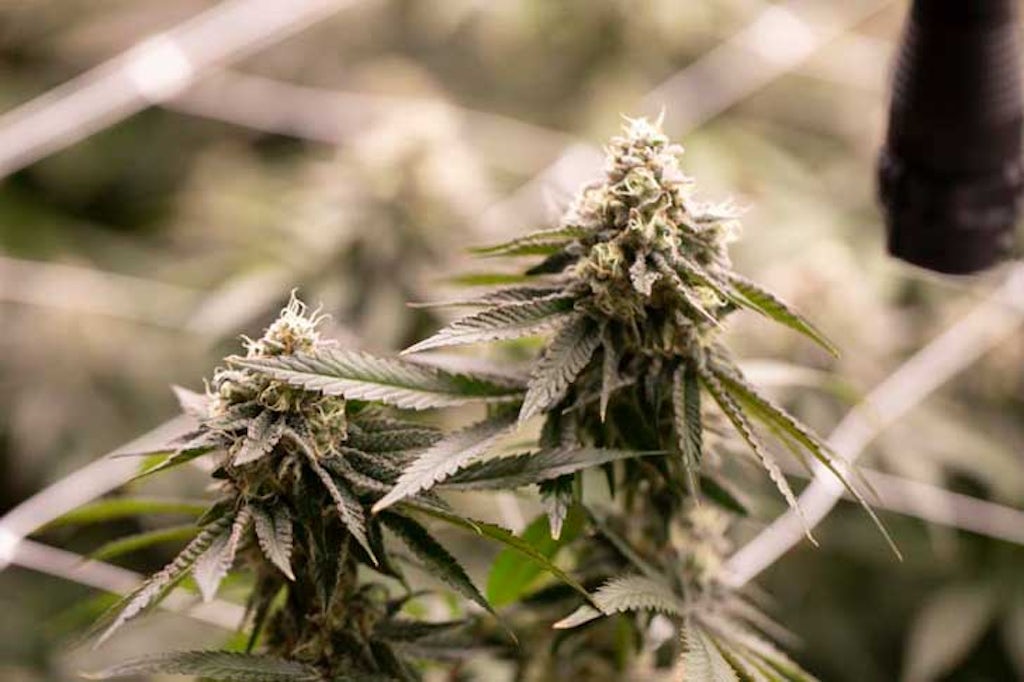
Without question, fan leaves are the emblem of marijuana culture. Found on all branches, these thin, pointy green leaves play a significant role in converting light and CO2 into energy. As a bonus, they’re also fantastic indicators of a cannabis plant’s overall health. Whenever cultivators notice fan leaves drooping or turning yellow prematurely, it’s a safe bet there’s something off in terms of temperature, water, or nutrient levels.
Even though fan leaves are so iconic in cannabis culture, they aren’t all that valuable in terms of effects. While you could press some cannabinoids out of these leaves, most people simply trim and toss fan leaves during harvest. This is because fan leaves are responsible for photosynthesis and don’t have stalked glandular trichomes which are epidermal hairs that secrete a high abundance of cannabinoids relative to their size. 5
However, cultivators should look out for sugar leaves on their cannabis plant’s flowers. Although they’re not as large as fan leaves, sugar leaves play a major role in plant defense and also a minor role in the photosynthesis process. As the name suggests, these leaves are densely covered cannabinoid-rich stalked glandular trichomes that resemble a sugar coating. The sugar leaves grow alongside the buds during the flowering cycle, and are also present on the flowering male cannabis plant.
Sugar leaves don’t have the same amount of trichomes you’ll find on the buds themselves, but that doesn’t mean sugar leaves are worthless. Many people enjoy making extracts or edibles with reserved sugar leaves. 6
Calyx and bract
Arguably, some of the most misused terms in cannabis plant morphology are “calyx” and “bract.” While both of these structures protect the female plant’s seed production site (the ovule), they aren’t the same thing.
When many cultivators mention the calyx, they are talking about the tiny, tear-shaped leaf that covers the ovule, which is actually the perigonal bract. Perigonal bracts are one of the most valuable parts of a marijuana plant because they produce a dense layer of stalked glandular trichomes. 7
While you could easily see bracts at the lower part of your plant’s colas, it’s actually impossible to see the calyx cells with the naked eye. These tiny protective structures also cover the female marijuana plant’s seed pod.
By the way, since bract protects the female plant’s reproductive site, you should find a large concentration of hair-like pistils nearby. As we’ve already mentioned, pistils are the thin structures that catch pollen from male plants.
Interestingly, you could determine the age of your marijuana plant by observing the colors of these pistils. At first, pistils will look bright white, but they will change to yellow, amber, and brown as the plant matures. In most cases, it’s a good idea to think of harvesting marijuana when most pistils start to change to the yellow and amber stage.
The star of the show: King Cola

After reviewing all the above info, you might be asking: “So what part of the marijuana plant do I smoke?” While you could technically smoke sugar leaves, when people talk about smoking ganja, they’re referring to the colas.
Colas are an aggregate of flower clusters, or “buds”, that form at the highest point of the main stem and on lateral branches during flowering. Buds contain the highest concentrations of cannabinoids. These buds also hold most of the aromatic terpenes that give cannabis strains their distinct smells and flavors. 8
The most significant cannabis cola is located at the top of the central stem and is sometimes called the apical cola. If you let your cannabis plant grow naturally, this cola will dominate other bud sites in terms of size and potency. However, if you use training techniques like topping, scrogging, or LST, you could increase the size and potency of multiple cola sites.
Use trichomes to time your harvest
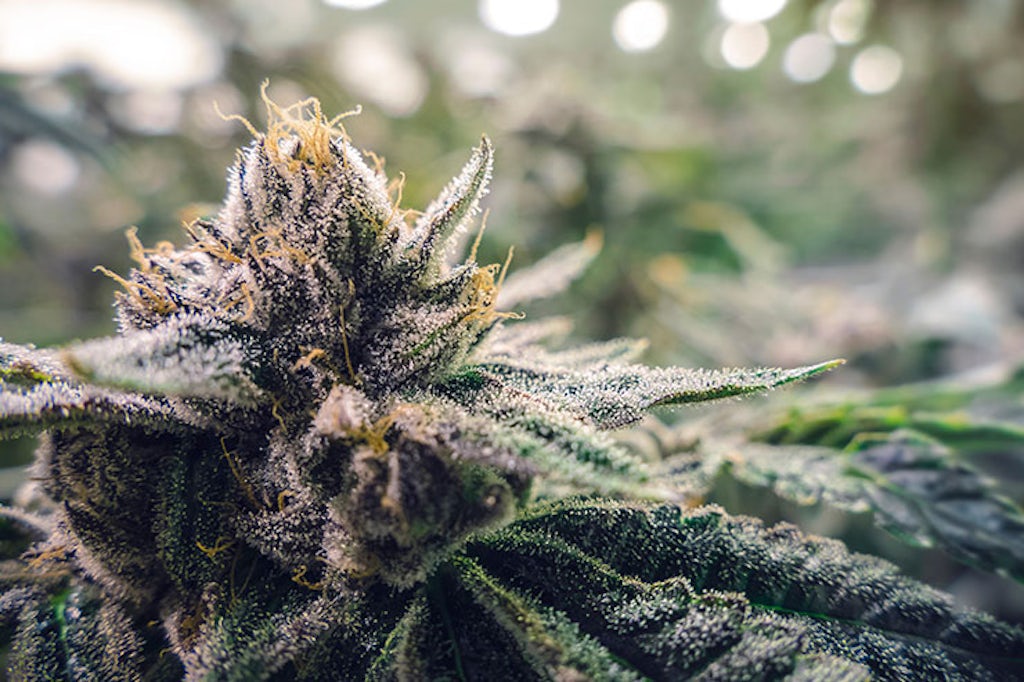
To better understand why buds are so valuable, you have to know a bit about “trichomes.” Inside these sticky pods, you’ll find all of the highly desirable cannabinoids and terpenes. Trichomes are tiny growths found on many plants, but they’re particularly special in cannabis. The trichome is where the plant produces cannabinoids like THC and CBD, as well as terpenes and other compounds important to the entourage effect.
Without these trichomes, smoking cannabis wouldn’t have any flavor or psychoactive effects.
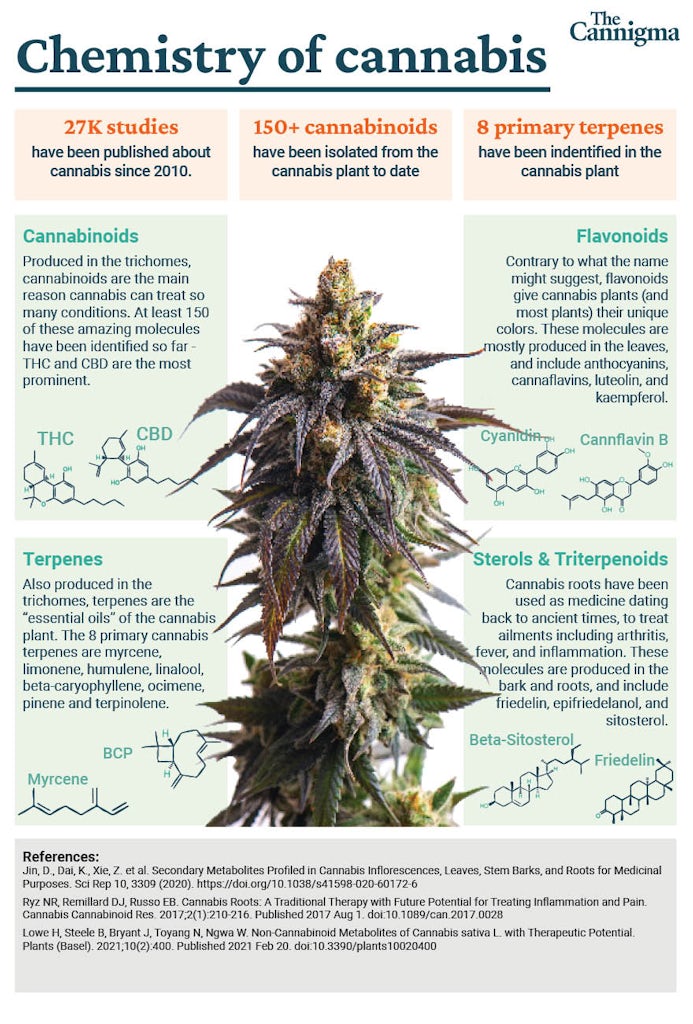
Since these trichomes are so small, cultivators often use a jeweler’s loupe to examine them before harvest. Early in the flowering stage, trichomes on your buds should have a translucent appearance. However, over the next few weeks, you’ll notice these trichomes transform to a milky-white shade that eventually morphs to a reddish-orange.
It is generally accepted that you want to harvest your cannabis buds when the majority of trichomes are milky white, as this color indicates that the psychoactive cannabinoid content is at peak potency. However, a study of 300 cannabis samples found little correlation between trichome head color and cannabinoid content, apart from when the heads are red and are past the point of peak potency. 9
Review cannabis plant morphology before your first grow
While you could always dig deeper into the field of cannabis plant morphology, the above descriptions should give you a good overview. For a successful grow, please take your time reviewing pictures of your chosen strain beforehand. By better understanding this plant’s fascinating biology, you should feel more comfortable dealing with any potential cultivation issues.
Sources
- Clarke RC (1981) Marijuana Botany An Advanced Study: The Propagation and Breeding of Distinctive Cannabis.
- Spitzer-Rimon B, Duchin S, Bernstein N, Kamenetsky R (2019) Architecture and florogenesis in female Cannabis sativa plants. Frontiers in Plant Science 10: 350
- McKernan, K., Spangler, J., Helbert, Y., Lynch, R. C., Devitt-Lee, A., Zhang, L., Orphe, W., Warner, J., Foss, T., Hudalla, C. J., Silva, M., & Smith, D. R. (2016). Metagenomic analysis of medicinal Cannabis samples; pathogenic bacteria, toxigenic fungi, and beneficial microbes grow in culture-based yeast and mold tests. F1000Research, 5, 2471. https://doi.org/10.12688/f1000research.9662.1
- Clarke RC (1981) Marijuana Botany An Advanced Study: The Propagation and Breeding of Distinctive Cannabis.
- Turner JC, Hemphill JK, Mahlberg PG (1978) Quantitative Determination of Cannabinoids in Individual Glandular Trichomes of Cannabis Sativa L. (Cannabaceae). American Journal of Botany 65: 1103-1106
- Potter DJ (2009) The Propagation, Characterisation and Optimisation of Cannabis Sativa L. as a Phytopharmacuetical. King’s College London
- Small E (2016) Cannabis : A Complete Guide. Chapman and Hall/CRC, Milton, UK
- Booth JK, Page JE, Bohlmann J (2017) Terpene synthases from Cannabis sativa. PLoS ONE 12: e0173911
- Potter DJ (2009) The Propagation, Characterisation and Optimisation of Cannabis Sativa L. as a Phytopharmacuetical. King’s College London
Sign up for bi-weekly updates, packed full of cannabis education, recipes, and tips. Your inbox will love it.

 Shop
Shop Support
Support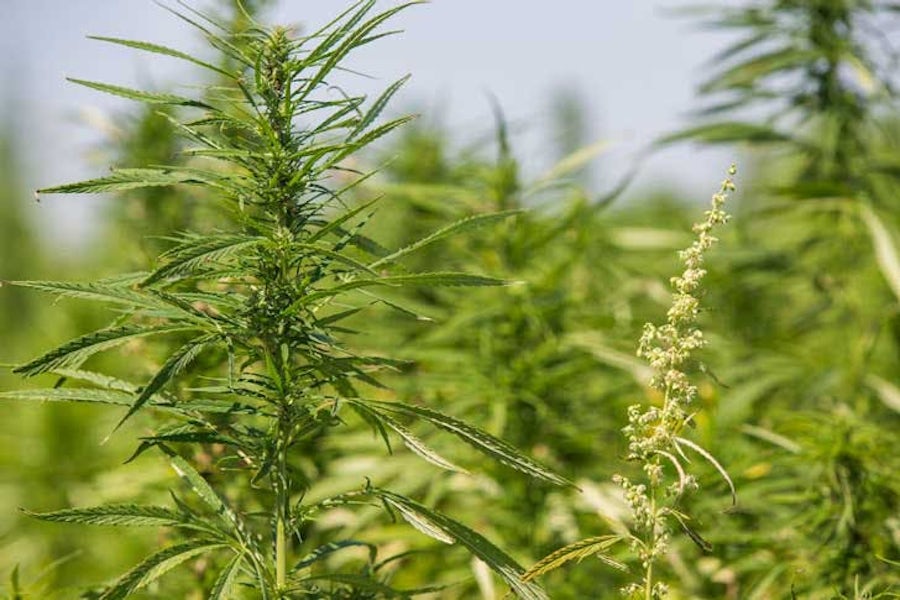


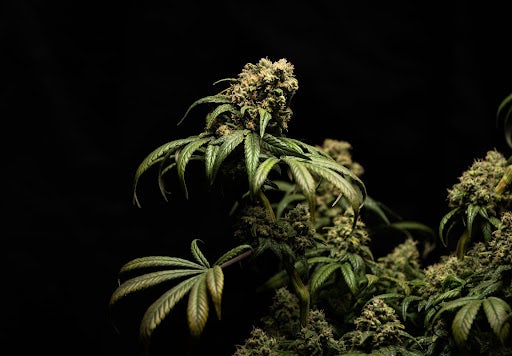
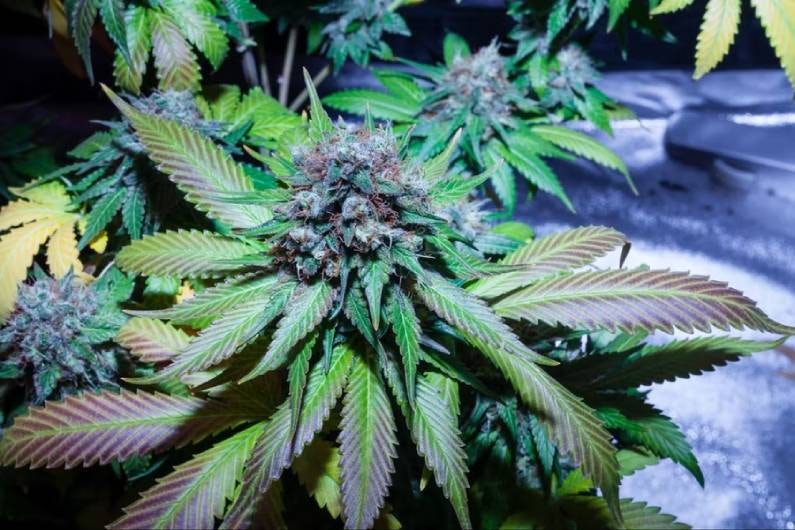
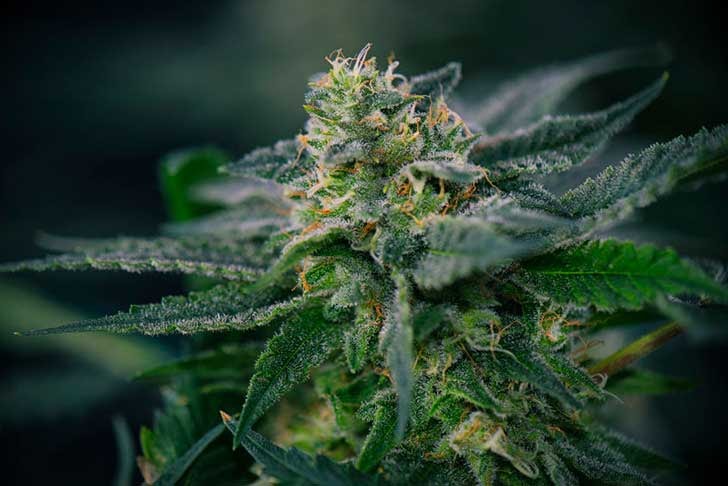

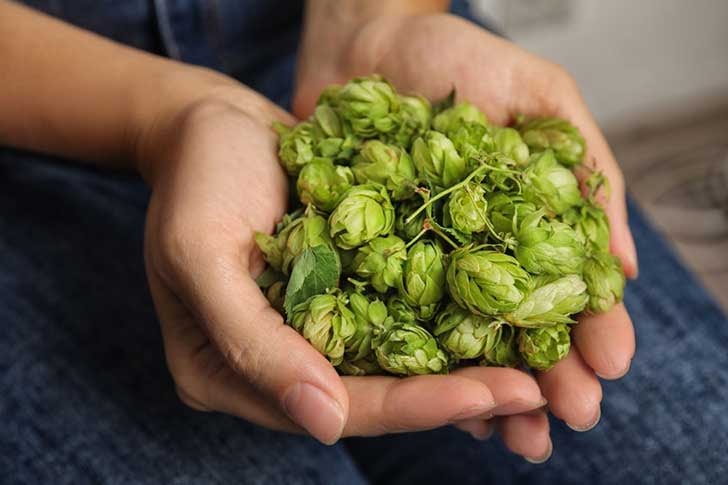












Is it true that cannabis have 100 different kind plants? If so need a list and what’s it for?